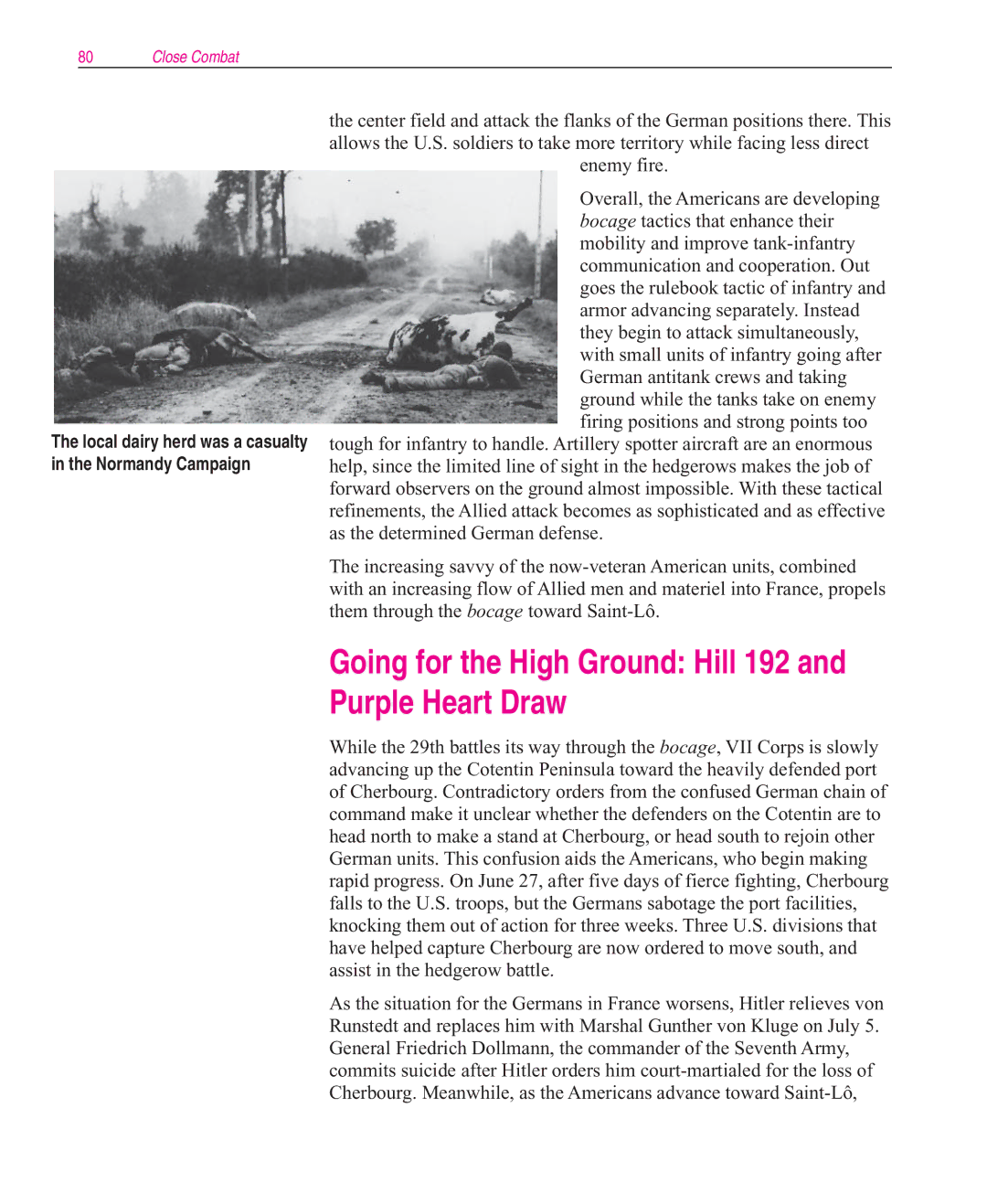
80Close Combat
The local dairy herd was a casualty in the Normandy Campaign
the center field and attack the flanks of the German positions there. This allows the U.S. soldiers to take more territory while facing less direct
enemy fire.
Overall, the Americans are developing bocage tactics that enhance their mobility and improve
tough for infantry to handle. Artillery spotter aircraft are an enormous help, since the limited line of sight in the hedgerows makes the job of forward observers on the ground almost impossible. With these tactical refinements, the Allied attack becomes as sophisticated and as effective as the determined German defense.
The increasing savvy of the
Going for the High Ground: Hill 192 and Purple Heart Draw
While the 29th battles its way through the bocage, VII Corps is slowly advancing up the Cotentin Peninsula toward the heavily defended port of Cherbourg. Contradictory orders from the confused German chain of command make it unclear whether the defenders on the Cotentin are to head north to make a stand at Cherbourg, or head south to rejoin other German units. This confusion aids the Americans, who begin making rapid progress. On June 27, after five days of fierce fighting, Cherbourg falls to the U.S. troops, but the Germans sabotage the port facilities, knocking them out of action for three weeks. Three U.S. divisions that have helped capture Cherbourg are now ordered to move south, and assist in the hedgerow battle.
As the situation for the Germans in France worsens, Hitler relieves von Runstedt and replaces him with Marshal Gunther von Kluge on July 5. General Friedrich Dollmann, the commander of the Seventh Army, commits suicide after Hitler orders him
